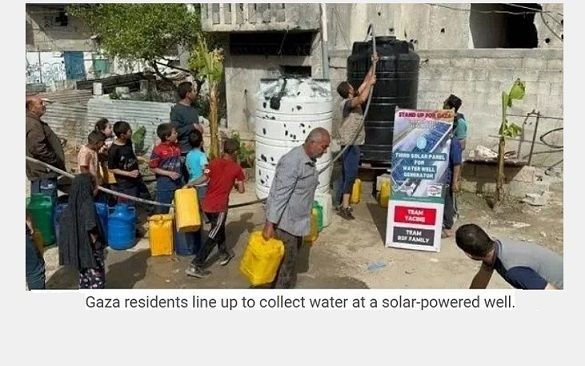
China’s low-cost solar panels are bringing light and hope to Palestinians living under the shadow of war in Gaza.
In Gaza’s refugee camps, besieged by Israeli occupation forces, one of the most crucial survival tools may come as a surprise: solar panels.
While food and water are essential to life, in Gaza, a city under siege, electricity means something more for local people. This is because fresh food and clean water require electricity to access. The ability to charge a phone can also mean life or death, as residents must stay informed to avoid military strikes.
GAZA – A CITY POWERED BY SOLAR
Solar power has played a crucial role in Gaza long before the current conflict. According to a 2022 analysis Gaza City had one of the highest densities of home solar installations in the world. By 2023, the region was estimated to have over 12,000 rooftop solar systems.
Local solar engineers estimate that one-third of Gaza’s population and over half of its businesses use solar panels, which may provide up to 25% of Gaza’s total electricity.
The widespread adoption of solar power stems from a harsh reality. Gaza’s 2 million Palestinians require around 500 megawatts of electricity, but in “normal times”, they receive just 180 megawatts. As a result, Gaza is forced to divide its power supply by region, with different areas receiving electricity in an 8-hour shift.
The Israeli occupation controls Gaza’s entire power supply, with 120 megawatts generated by Israeli power plants and 60 megawatts coming from a local plant that also relies on fuel supplied by Israel.
Power outages become a common tactic used by the Zionist regime to punish Palestinians during periods of conflicts. In August 2020, amid a heatwave, the Israeli’s cut off fuel supplies to Gaza’s power plant, reducing electricity access to just four hours a day.
In such circumstances, solar power becomes the only reliable source of energy. In a place where water scarcity has become Gaza’s greatest humanitarian crisis, this solar-powered access to clean water is a lifeline.
Gaza serves as a reminder that those suffering in poverty and war are more desperate to embrace new technologies than residents of developed countries.
With its dry climate and 320 days of sunlight a year, the Middle East is well-suited for solar development. What was needed was a drop in costs to make it accessible.
Over the past decade, the global cost of solar power has dropped by 90%, and China has been the main driving force behind this dramatic price drop.
While Western countries have imposed strict export restrictions on Chinese solar products, for much of the developing world the low costs not only offer economic benefits but also save lives.
China’s cost-effective solar products have been widely used in electricity projects supported by the Palestinian government and international humanitarian organizations.
In Gaza, it’s not just the US supplied bombs that kill children, but also the lack of electricity – for hospitals; for providing clean water; for sanitation services, etc.
Source: Edited extracts from article in The China Academy, September 4, 2024.
Click this link to read full article: https://thechinaacademy.org/while-bombs-fall-china…/